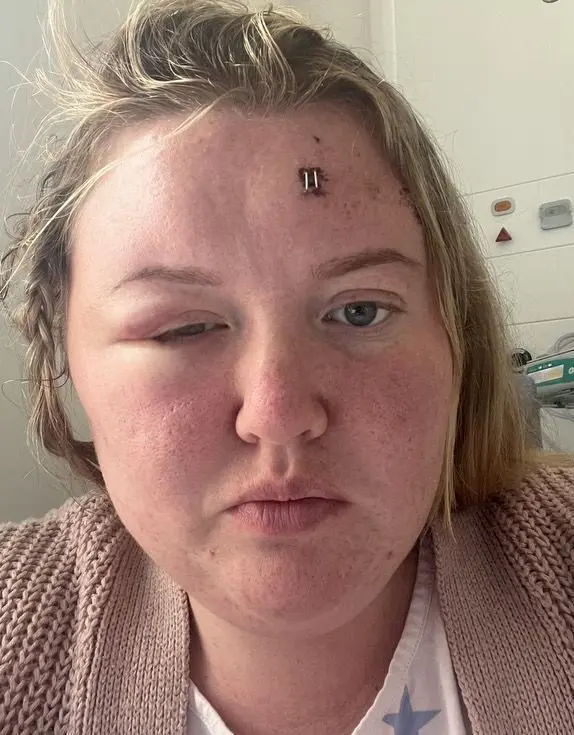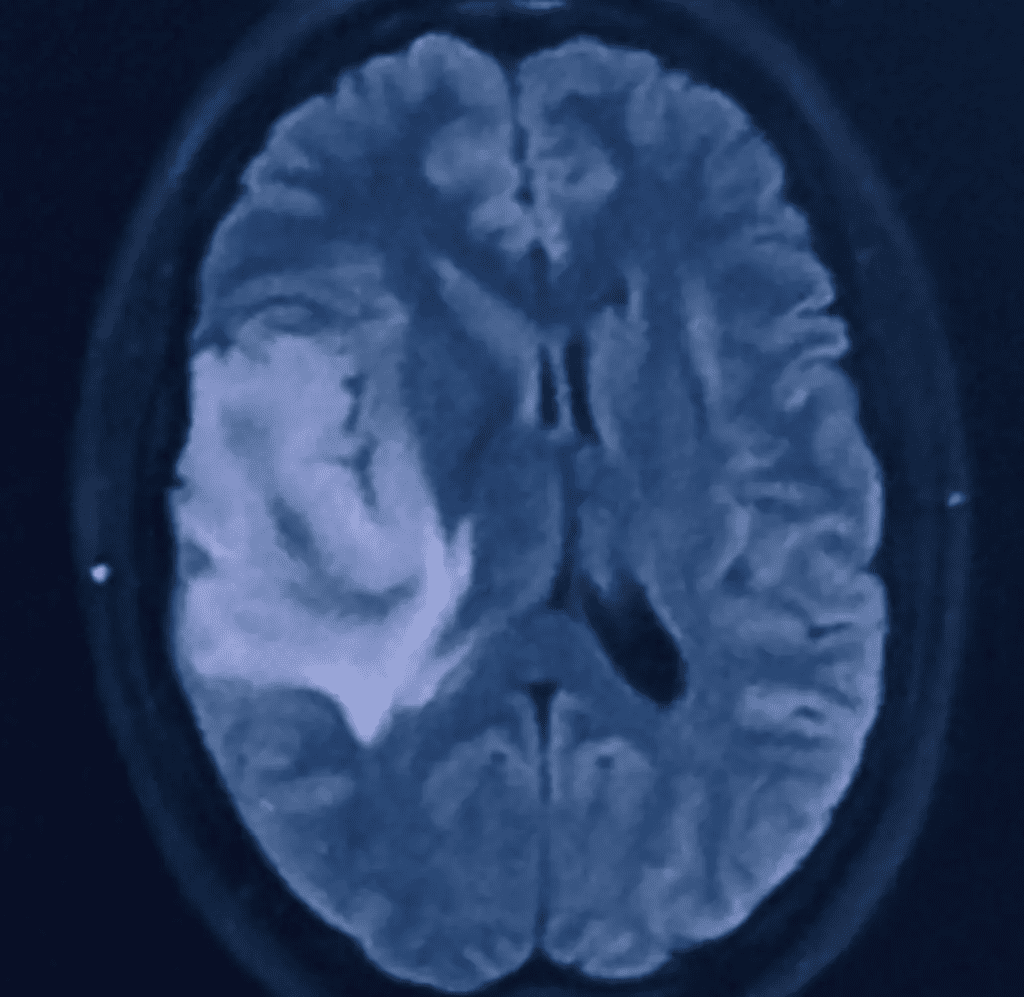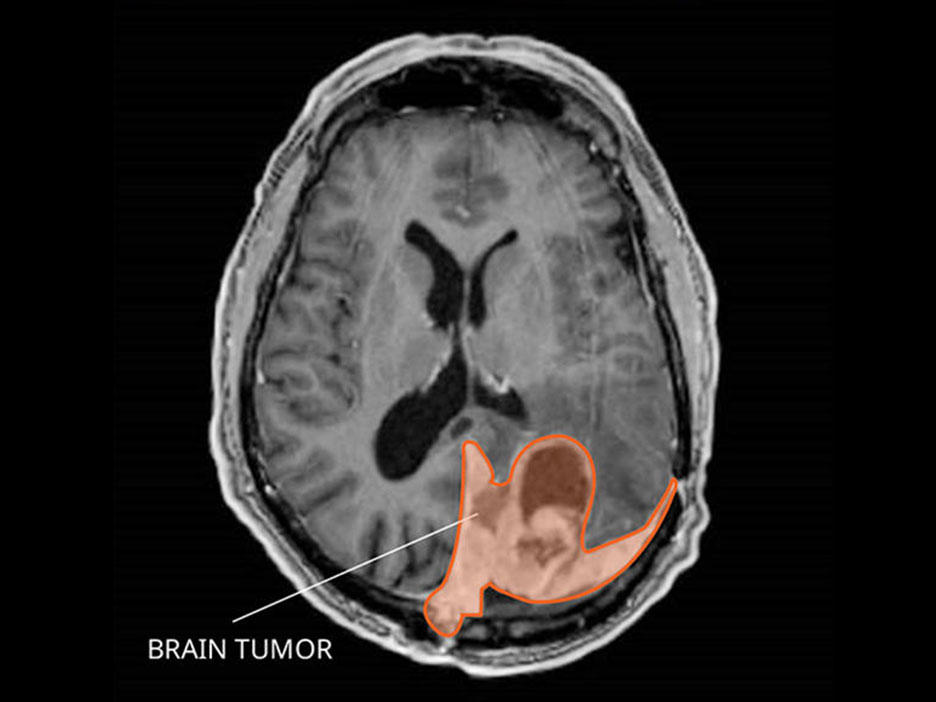Imagine going about your everyday life, only to be blindsided by a sudden and severe headache that lasts for days. You might brush it off as a migraine, but what if it’s more than that? This was the reality for Kimberley Baggley, a 27-year-old primary school teacher from Stoke-on-Trent, England. What started as a persistent headache quickly spiraled into something much more sinister—a diagnosis that would change her life forever. In this article, we’ll delve into Kimberley’s incredible story, explore the symptoms she experienced, and discuss the broader implications of brain tumors.
Kimberley’s Struggle Begins: A Week-Long Headache

In June 2023, Kimberley began experiencing what she thought was a typical migraine. The pain was intense but not unusual enough to raise immediate alarm. As a primary school teacher, Kimberley was used to long days and occasional stress-induced headaches. She decided to take some time off work to rest, thinking it was nothing more than exhaustion.
However, the headache persisted for an entire week. Despite taking painkillers and resting, the pain didn’t subside. On top of the headache, she began feeling “pins and needles” on the left side of her face. Alarmed by this unusual sensation, Kimberley made several visits to her local doctor and even the A&E department, only to be sent home with more painkillers and advice to “take a spa day” and “relax.”
The Seizure That Changed Everything
On the seventh day of the relentless headache, Kimberley’s husband, Luke Baggley, took their six-year-old son, George, to swimming lessons. When they returned home, they found Kimberley unconscious in bed after suffering a seizure. In a panic, Luke immediately called for an ambulance, and Kimberley was rushed to Royal Stoke University Hospital. Upon arrival, she had another seizure, further adding to the urgency of her condition.
Doctors performed a CT scan and an MRI, which revealed a shocking discovery: Kimberley had a brain tumor. The severity of the situation was evident, and the medical team knew they needed to act quickly. Kimberley was moved to the neurology ward, where further tests confirmed the presence of a Grade 3 astrocytoma, a rare, aggressive, and malignant brain tumor.
The Moment of Diagnosis: “You Have a Brain Tumor”
“You have a brain tumor.” These five words hit Kimberley like a sledgehammer. In an instant, her life changed. The news was not only terrifying but also bewildering—how could something as simple as a headache turn out to be a life-threatening tumor? Kimberley describes that moment as one of the most surreal experiences of her life, saying, “Your whole world crashes. I know it sounds cliché, but you don’t see how things will get better—it’s terrifying.”
Luke, who had been by Kimberley’s side throughout the ordeal, was equally devastated. “I was terrified as I didn’t know what was going to happen,” he shared. The couple realized they were facing a long, uncertain journey ahead, with treatments and surgeries that would test their resilience.
Emergency Surgery: The Craniotomy
In June 2023, Kimberley underwent an emergency craniotomy, a surgical procedure that involves opening the skull to remove the tumor. Surgeons were able to remove 95% of the tumor, a significant achievement given its location and complexity. The removed tissue was sent for a biopsy, which confirmed the tumor was a Grade 3 astrocytoma—a fast-growing and aggressive form of brain cancer.

Kimberley’s initial reaction to the surgery was surprisingly optimistic. “I remember my consultant said that it wasn’t the worst, but it wasn’t the best tumor to get, and that put me at ease,” she said. Her positivity was remarkable given the circumstances, but as a naturally hopeful person, she believed that the surgery would be the end of her ordeal. Unfortunately, the road to recovery was just beginning.
Complications After Surgery
Shortly after her surgery, Kimberley faced a series of complications, including an infection that required another operation and the partial removal of her skull. As if that weren’t enough, she also developed sepsis, a life-threatening infection that delayed the start of her treatment. These complications took a toll on her physically and mentally, adding layers of anxiety and uncertainty to her already daunting battle.
Despite these setbacks, Kimberley pressed on, determined to regain control of her life. She soon began a grueling regimen of 33 radiotherapy sessions, followed by chemotherapy to target the remaining cancer cells. As of now, she is on her tenth cycle of chemotherapy, demonstrating both her strength and the critical role of timely treatment.

The Symptoms and Early Warning Signs of Brain Tumors: What You Need to Know
Recognizing the Early Signs: It’s More Than Just a Headache
When you think of a brain tumor, you might imagine severe symptoms like seizures or sudden loss of motor function. However, many brain tumors start with subtle and often misinterpreted signs. Kimberley’s case began with a week-long headache, something that many of us would typically dismiss. But what made it different were the additional symptoms she experienced, such as facial tingling and sudden seizures. Understanding these warning signs can be crucial for early detection and treatment.
The symptoms of a brain tumor vary widely depending on the type, size, and location of the tumor. Some tumors develop slowly, causing mild symptoms over time, while others grow rapidly, leading to more severe and immediate effects. Let’s explore the most common early warning signs of brain tumors and how they often manifest.
Persistent Headaches: The Most Common Symptom
Headaches are the most frequently reported symptom of brain tumors, affecting nearly half of those diagnosed. However, not all headaches are created equal. Brain tumor-related headaches tend to have certain characteristics:

- They worsen over time and often don’t respond to usual pain medications.
- They are more severe in the morning, likely due to increased intracranial pressure that builds up overnight.
- They can be accompanied by nausea or vomiting, which is a sign that the brain is under pressure.
In Kimberley’s case, the persistent nature of her headache was a red flag. While most headaches are not related to brain tumors, it’s important to pay attention to changes in the pattern, intensity, or frequency of headaches, especially if they occur with other neurological symptoms.
Facial Tingling and Numbness: An Overlooked Symptom
Kimberley also experienced a tingling sensation on the left side of her face—often described as “pins and needles.” This symptom may seem odd in relation to a brain tumor, but it’s actually a potential sign of a neurological issue.
When a brain tumor presses on certain nerves, it can disrupt normal sensory function, causing numbness or tingling in various parts of the body. This type of symptom may also be accompanied by:
- Loss of sensation or weakness in specific areas.
- Difficulty with coordination or balance, particularly if the tumor is affecting the cerebellum or brainstem.
- Changes in facial expressions or movements, depending on the affected area of the brain.
In many cases, facial tingling or numbness is often mistaken for less serious conditions, such as a pinched nerve or stress-induced numbness. However, if this sensation persists, it should be investigated further by a healthcare professional.
Seizures: A Critical Warning Sign

Seizures are one of the most alarming symptoms associated with brain tumors, and they were the turning point in Kimberley’s diagnosis. Brain tumors can trigger seizures when they disrupt normal brain activity, leading to sudden bursts of electrical energy in the brain. Seizures can take various forms, including:
- Convulsions or full-body shaking (tonic-clonic seizures).
- Absence seizures, which involve brief lapses in awareness.
- Focal seizures, where only one part of the body is affected.
For Kimberley, her sudden collapse and loss of consciousness were clear indicators that something more serious was happening inside her brain. Seizures can be one of the first visible signs of a brain tumor, making them a crucial symptom to watch for.
Other Early Symptoms to Watch For
Beyond headaches, facial tingling, and seizures, there are other signs that might suggest the presence of a brain tumor. These symptoms often overlap with those of other conditions, making it challenging to identify a tumor early on. However, being aware of these signs can make a significant difference. They include:
- Vision problems, such as blurred vision, double vision, or sudden loss of sight in one eye.
- Hearing difficulties or ringing in the ears.
- Sudden changes in speech, like slurred words or difficulty finding the right words.
- Cognitive changes, including confusion, memory loss, or difficulty concentrating.
- Balance and coordination issues, such as unsteadiness or frequent falls.
While these symptoms do not always indicate a brain tumor, they warrant medical evaluation, especially if they persist or worsen over time.
Why Early Detection Matters

Early detection of a brain tumor is critical for improving treatment outcomes and increasing survival rates. Tumors that are discovered at an earlier stage can often be treated more effectively, reducing the risk of complications. Early treatment also offers a better chance of preserving neurological function and quality of life.
In Kimberley’s case, the delay in diagnosis could have been catastrophic, as her tumor was already advanced by the time it was detected. Fortunately, her family’s quick response after her seizure ensured she received immediate medical attention. This highlights the importance of being proactive when experiencing persistent or unusual symptoms.
Taking Action: What to Do If You Suspect a Brain Tumor
If you or someone you know is experiencing symptoms that could be related to a brain tumor, here are the steps you should take:
- Consult a doctor immediately: Don’t dismiss persistent headaches or neurological symptoms. Schedule a visit with your healthcare provider to discuss your concerns.
- Request further testing: If symptoms persist or worsen, request imaging tests such as a CT scan or MRI, which can help identify abnormalities in the brain.
- Keep track of symptoms: Maintain a journal to document the frequency, duration, and intensity of symptoms. This information can be helpful for doctors in making a diagnosis.
Ultimately, it’s better to be cautious and rule out serious conditions than to delay a potential diagnosis. Remember, when it comes to brain tumors, time is of the essence.


